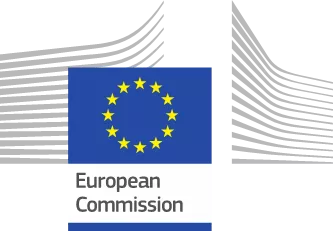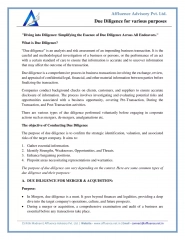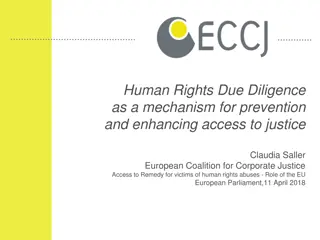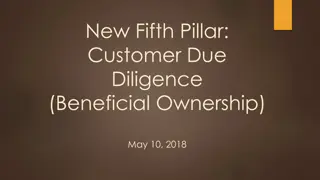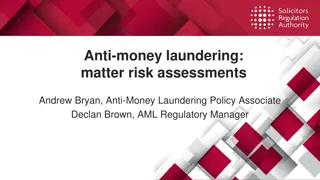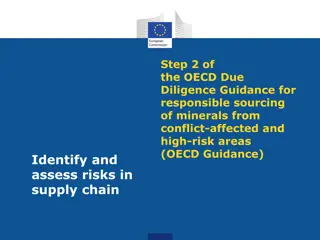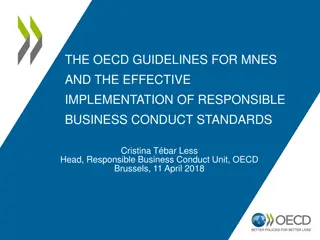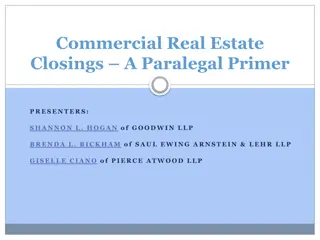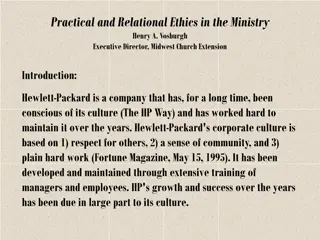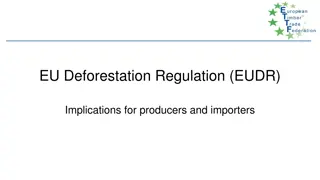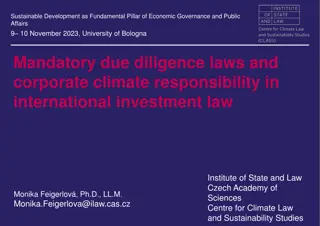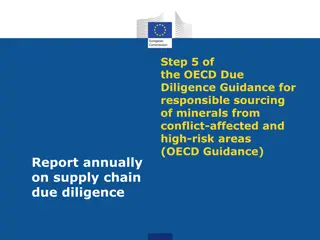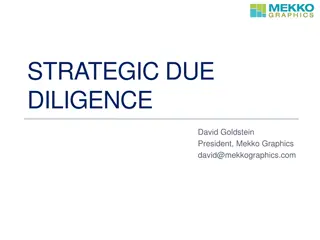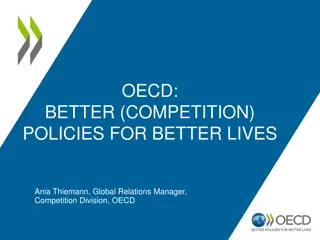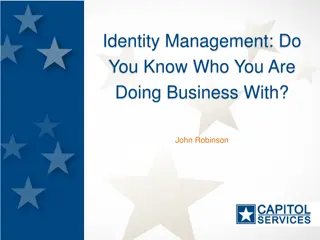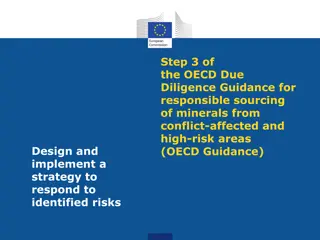OECD Due Diligence Guidance: Establish Strong Management Systems
The OECD Due Diligence Guidance outlines the importance of establishing strong management systems for responsible sourcing of minerals from conflict-affected and high-risk areas. This involves adopting company policies, engaging with suppliers, implementing grievance mechanisms, and utilizing the 3Ps checklist to ensure effective due diligence processes. Benefits include protecting profit, minimizing liabilities, and driving performance across supply chains.
Download Presentation

Please find below an Image/Link to download the presentation.
The content on the website is provided AS IS for your information and personal use only. It may not be sold, licensed, or shared on other websites without obtaining consent from the author. Download presentation by click this link. If you encounter any issues during the download, it is possible that the publisher has removed the file from their server.
E N D
Presentation Transcript
Step 1 of the OECD Due Diligence Guidance for responsible sourcing of minerals from conflict-affected and high-risk areas (OECD Guidance) Establish strong management systems
Content 1. Definition 2. Benefits of doing due diligence 3. OECD Step 1: Establish a strong management system 4. 3Ps checklist 5. Other tools and training available
What is due diligence according to the OECD? Due diligence is the processes through which enterprises can identify, prevent, mitigate and account for how they address their actual and potential adverse impacts
Some benefits of doing due diligence Protect and build profit, competitive advantage, viability and thus value Minimise liabilities, and so protect margin Drive performance for you and your suppliers
STEP 1 OF THE OECD GUIDANCE 1. Adopt, and clearly communicate to suppliers and the public, a company policy. Structure internal management to support supply chain due diligence. Establish a system of controls and transparency over the mineral supply chain (inc. chain of custody or a traceability system). Strengthen company engagement with suppliers. A supply chain policy should be incorporated into contracts and/or agreements with suppliers. Establish a company-level, or industry-wide, grievance mechanism as an early-warning risk-awareness system. 2. 3. 4. 5.
The 3Ps Checklist: People, Policies and Procedures The 3Ps checklist provides step-by-step guidance on how to get the People, Policies and Procedures in place for establishing strong company management systems , in line with Step 1 of the OECD DDG. It details the what , why and how to help companies implement strong management systems.
The 3P Checklist - Establish strong company management systems 1/4 Step 1 People Decide who has responsibility for due diligence. Appoint and train an internal team about the importance of due diligence and how to implement and manage the due diligence process. Inform all relevant external stakeholders about the due diligence processes in place and what it means for them.
The 3P Checklist - Establish strong company management systems 2/4 Step 1 Policies Create a Supply chain policy for minerals originating from conflict -affected and high-risk areas.
The 3P Checklist - Establish strong company management systems 3/4 - Step 1 The policies need to be Effective Should have an effective date Documented Must be available in written format Included in standard operating procedures Communicated Internally to employees Externally to suppliers Publicly available
The 3P Checklist - Establish strong company management systems 4/4 - Step 2 Procedures Establish a system of transparency, information collection and control over the supply chain. Collect information in order to identify your suppliers, countries of transit and origin of the material. Create a grievance mechanism.
Other tools that can help you Letter template to be sent to your suppliers introducing your new due diligence policy Self assessment on STEP 1
Where you can find training and information The OECD Guidance provides a model supply chain policy that can be used (see Annex II of the OECD Guidance). Glossary to understand technical language is available on the Due Diligence Ready! portal. Due Diligence Toolbox available on the Due Diligence Ready! portal.
Thank you For further information visit the Due Diligence Ready! portal



